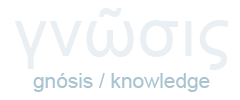| dc.contributor.author | Lombardo,Michael V. | en |
| dc.contributor.author | Chakrabarti,B. | en |
| dc.contributor.author | Lai,Meng-Chuan | en |
| dc.contributor.author | Baron-Cohen,Simon | en |
| dc.creator | Lombardo, Michael V. | en |
| dc.creator | Chakrabarti,B. | en |
| dc.creator | Lai,Meng-Chuan | en |
| dc.creator | Baron-Cohen,Simon | en |
| dc.date.accessioned | 2017-07-27T10:22:00Z | |
| dc.date.available | 2017-07-27T10:22:00Z | |
| dc.date.issued | 2012 | |
| dc.identifier.uri | https://gnosis.library.ucy.ac.cy/handle/7/37455 | |
| dc.description.abstract | Background: While models of autism spectrum conditions (ASC) are emerging at the genetic level of analysis, clear models at higher levels of analysis, such as neuroanatomy, are lacking. Here we examine agenesis of the corpus callosum (AgCC) as a model at the level of neuroanatomy that may be relevant for understanding self-referential and social-cognitive difficulties in ASC. Methods. We examined performance on a wide array of tests in self-referential and social-cognitive domains in a patient with both AgCC and a diagnosis of ASC. Tests included a depth-of-processing memory paradigm with self-referential and social-cognitive manipulations, self-report measures of self-consciousness, alexithymia, and empathy, as well as performance measures of first-person pronoun usage and mentalizing ability. The performance of the AgCC patient was compared to a group of individuals with ASC but without AgCC and with neurotypical controls. These comparison groups come from a prior study where group differences were apparent across many measures. We used bootstrapping to assess whether the AgCC patient exhibited scores that were within or outside the 95% bias-corrected and accelerated bootstrap confidence intervals observed in both comparison groups. Results: Within the depth-of-processing memory paradigm, the AgCC patient showed decreased memory sensitivity that was more extreme than both comparison groups across all conditions. The patient's most pronounced difficulty on this task emerged in the social-cognitive domain related to information-processing about other people. The patient was similar to the ASC group in benefiting less from self-referential processing compared to the control group. Across a variety of other self-referential (i.e. alexithymia, private self-consciousness) and social-cognitive measures (i.e. self-reported imaginative and perspective-taking subscales of empathy, mentalizing), the AgCC patient also showed more extreme scores than those observed for both of the comparison groups. However, the AgCC patient scored within the range observed in the comparison groups on measures of first-person pronoun usage and self-reported affective empathy subscales. Conclusions: We conclude that AgCC co-occurring with a diagnosis of ASC may be a relevant model at the level of neuroanatomy for understanding mechanisms involved in self-referential and high-level social-cognitive difficulties in ASC. © 2012 Lombardo et al.; licensee BioMed Central Ltd. | en |
| dc.source | Molecular Autism | en |
| dc.source.uri | https://www.scopus.com/inward/record.uri?eid=2-s2.0-84871183898&doi=10.1186%2f2040-2392-3-14&partnerID=40&md5=3421c03a6bb31e1a5722b6e7bc5c69b1 | |
| dc.subject | Agenesis of the corpus callosum | en |
| dc.subject | Autism | en |
| dc.subject | Mentalizing | en |
| dc.subject | Self | en |
| dc.subject | Social cognition | en |
| dc.subject | Theory of mind | en |
| dc.title | Self-referential and social cognition in a case of autism and agenesis of the corpus callosum | en |
| dc.type | info:eu-repo/semantics/article | |
| dc.identifier.doi | 10.1186/2040-2392-3-14 | |
| dc.description.volume | 3 | |
| dc.description.issue | 1 | |
| dc.author.faculty | Σχολή Κοινωνικών Επιστημών και Επιστημών Αγωγής / Faculty of Social Sciences and Education | |
| dc.author.department | Τμήμα Ψυχολογίας / Department of Psychology | |
| dc.type.uhtype | Article | en |
| dc.description.notes | Cited By :7; Export Date: 17 July 2017 | en |
| dc.contributor.orcid | Lombardo, Michael V. [0000-0001-6780-8619] | |
| dc.gnosis.orcid | 0000-0001-6780-8619 | |
